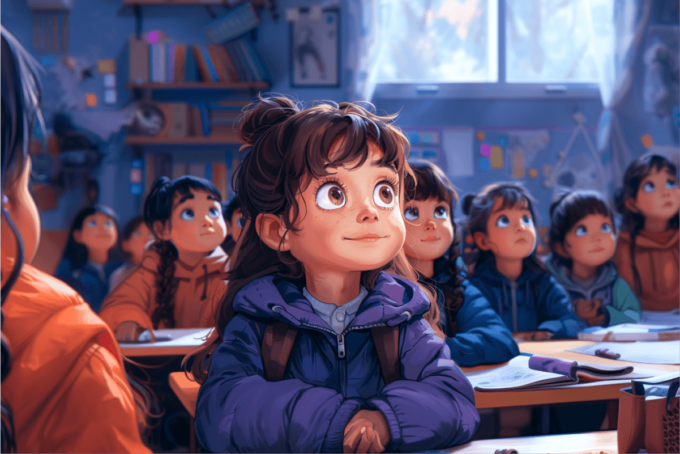This is Part II of the article that focuses on teaching in the inner city. Part I can be found here.
Although it’s great to hear stories, as a teacher and/or parent, how can you make it work for your kids?
Wouldn’t you like to get first hand advice from the teacher?
And what about the author? What is his advice on using Maurice on the Moon in the classroom?
Advice from the teacher using Maurice on the Moon in her classroom
With the success that Cathy Seabourne has had, she was willing to share some advice for others that are looking for a good book to use in the classroom.
From an English class perspective, she can “talk about character analysis, setting, conflict, character interaction, bullying – issues that real kids have.” Also, “Dan’s book is similar to the Wizard of Oz. Themes of longing and yearning for something and then discovering that where you came from and your own background is so valuable.”
Cathy goes on to add that this book does well with regards to standards a literature teacher would look for like:
- Does it have a definable setting?
- Does it have strongly written characters?
- Does it have conflict?
- Is there compelling dialog?
And, “on the other side, there is so much real science involved. You will learn about concepts like gravity, and pressure suits, C02 scrubbers, helmets.”
Advice and thoughts from the author, Daniel Barth
Daniel Barth, the author of Maurice on the Moon, is thrilled to have his book in the classroom. Interestingly enough, he never set out to write an educational book. But luckily, Maurice was born and is used in many classrooms as part of the curriculum.
However, Cathy’s use of the book is really compelling to Dan. “Maurice is a science book, steeped in real science as that is my passion. But Cathy is using it to teach reading skills which both surprises me and thrills me,” Dan explains.
Maurice on the Moon has been clinically tested and has been proven to increase scores on standards-based exams.
Dan’s advice to teachers and parents interested in using his book as part of a curriculum follow.
Using Maurice on the Moon is easy and exciting for both teacher and student. The fundamental concept of the book is to excite and delight the reader by introducing not only likable characters like Maurice and Cassie, but to introduce the Moon as a real place where people can live, work and explore.
Students who read Maurice are often full of questions; ‘Is this real?’, ‘Could Maurice really jump 24 feet high on the Moon?’, ‘Why does he need a helmet all the time?’ These questions are the key to transitioning from reading about science adventures to participating in them. One of the easiest ways to do this is to encourage students to begin observing the Moon for themselves.
Observing the Moon opens a world of wonder, and it is free to all; and unlike so much of astronomy – no equipment is needed and city lights are no impediment. A few moments of careful observation will show that the Moon is so much more than ‘a white rock in the sky’! Patterns of light and dark tell us a lot about the local geography on the Moon. Darker areas are maria, oceans of lava that filled giant impact craters and then froze solid billions of years ago. Lighter areas are highlands, heavily cratered mountainous regions; even some of the larger craters are visible to the naked eye – looking like white splatter marks on the dark surface of the maria.
From here, it is a small step to putting half an inch of flour in a pie pan and dropping some small pebbles from a height of several inches to make ‘craters’ of your own. What happens if we use different size pebbles? What happens if we drop them from different heights? Children are natural scientists, and the questions will come fast and furious as you explore together. The teacher and parent now step back into the role of coach and guide the student, encouraging them to record what they discover and organize their thoughts, questions, and results. Surprise! We’re doing science!
Suddenly, science isn’t painful anymore! Using the magic of teaching science through literature, science has become a fun and natural activity again. There are dozens of fun, low-cost science activities available for free download at www.mauriceonthemoon.com, and I add new activities for teachers, home school parents, and students every month.
Read about Dr. Daniel Barth’s recent visit to Southeast High School.



